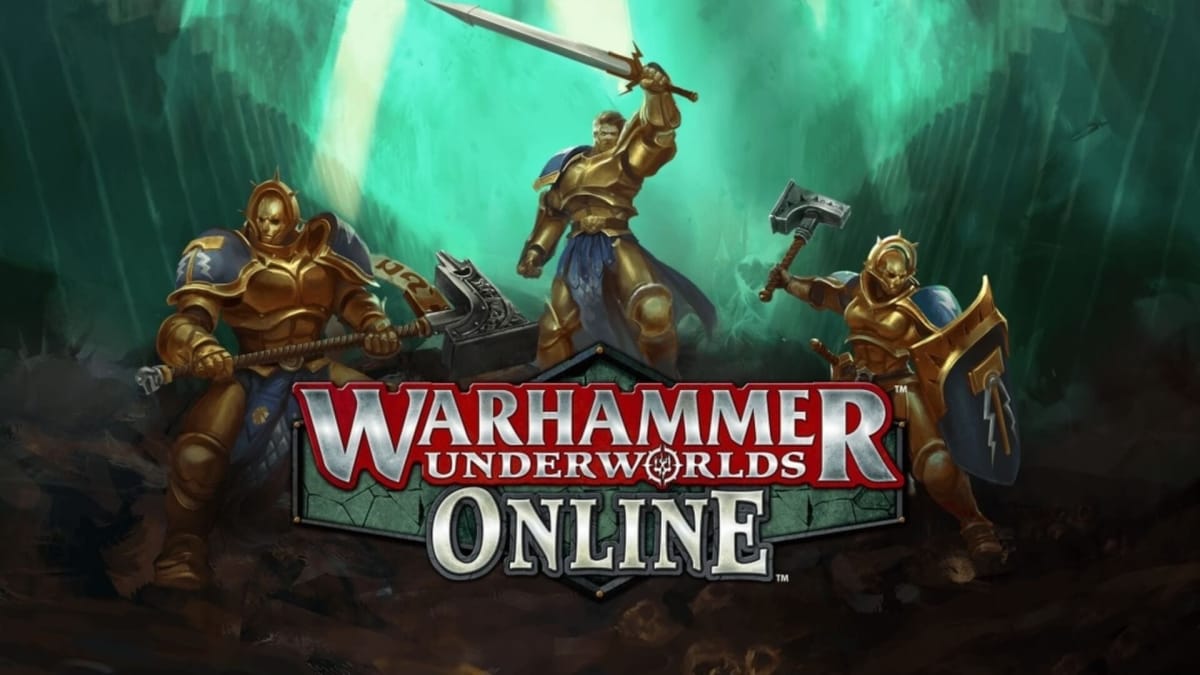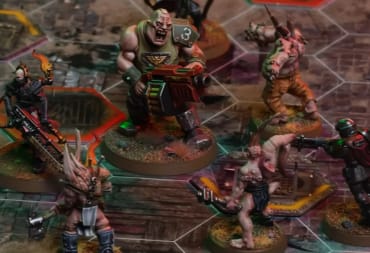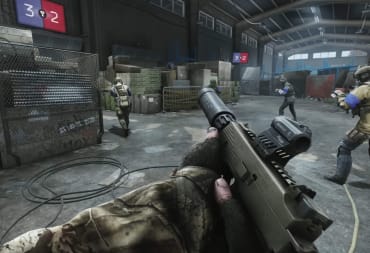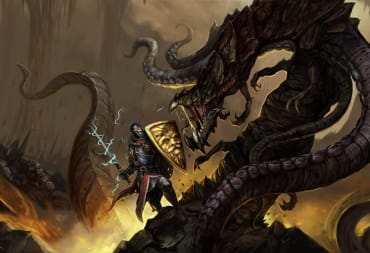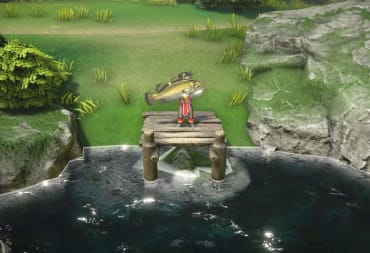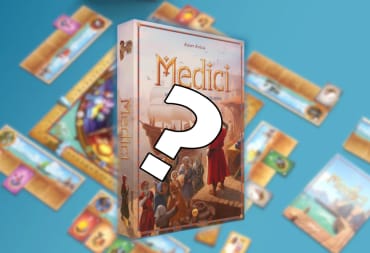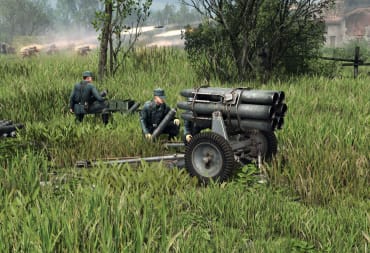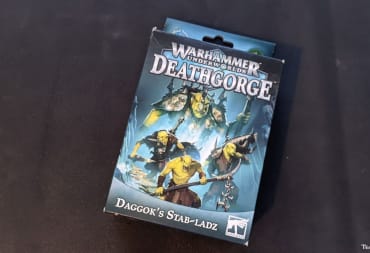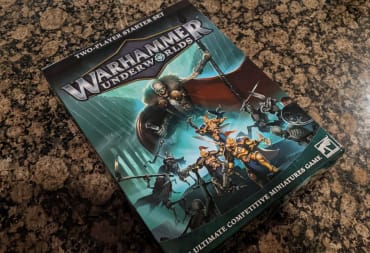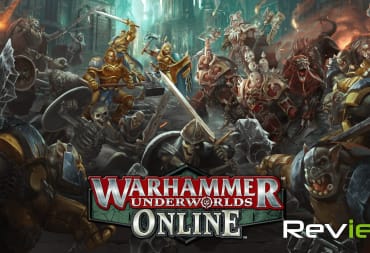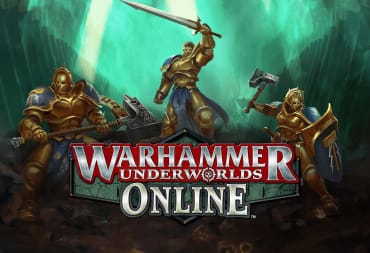Warhammer Underworlds Online is digital port of the competitive tabletop skirmish game, Warhammer Underworlds, where each player picks a warband of fighters and creates a deck before battling for glory points in the underworlds. The game is very easy to play, but there is a lot of strategic depth to a lot of elements of it and our Warhammer Underworlds Online guide will give you some hints and tips in order to get you going. You will better understand this guide after you've played through the tutorial, so some knowledge of the game and rules is assumed.
These hints and tips also apply to the tabletop version of the game. This guide will be updated as new warbands are added, so check back after each release for our warband hints and tips.
Warhammer Underworlds Online Guide - Factions
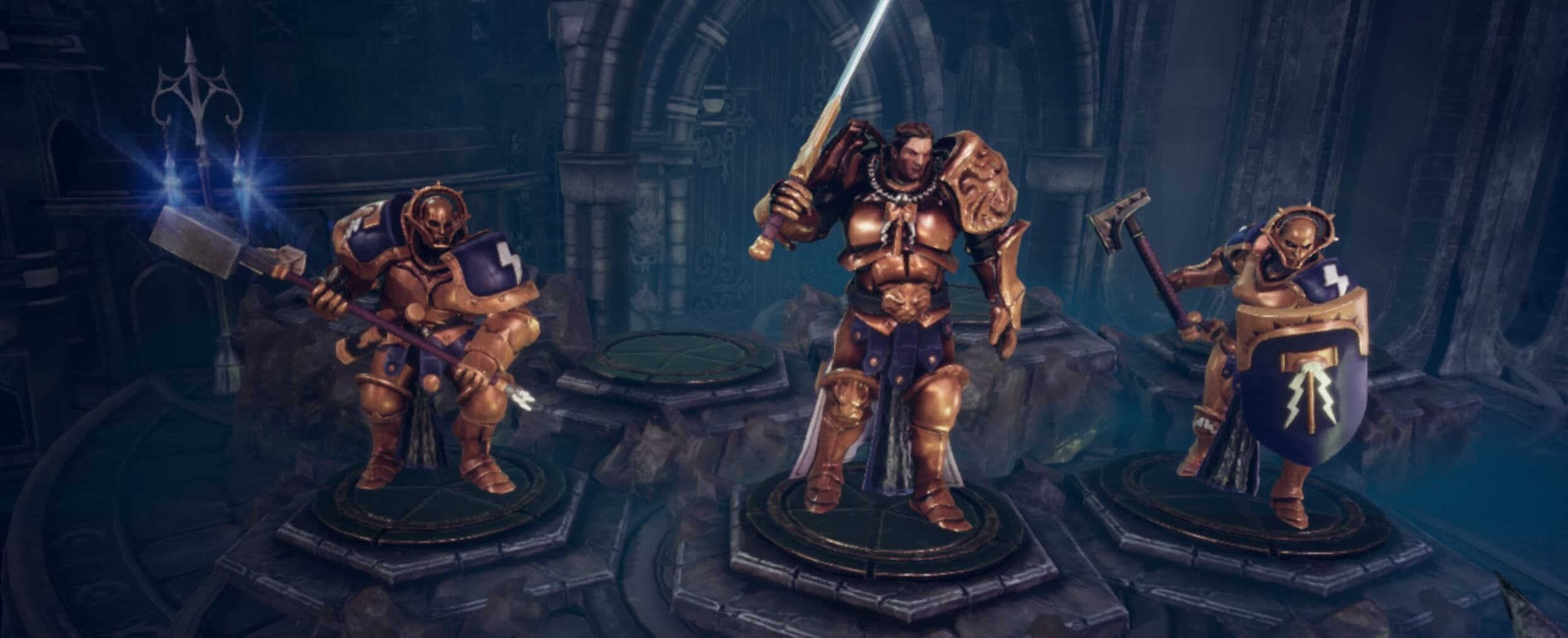
Steelheart’s Champions
Steelheart’s warband has 3 Fighters. Their deck can be built in an aggressive theme or a defensive objective control. Their low fighter count means that their fighters are elite, they’re able to hit consistently and take damage back. They are beginner-friendly as they are quite forgiving as a warband, and the low fighter count makes them easy to pilot.
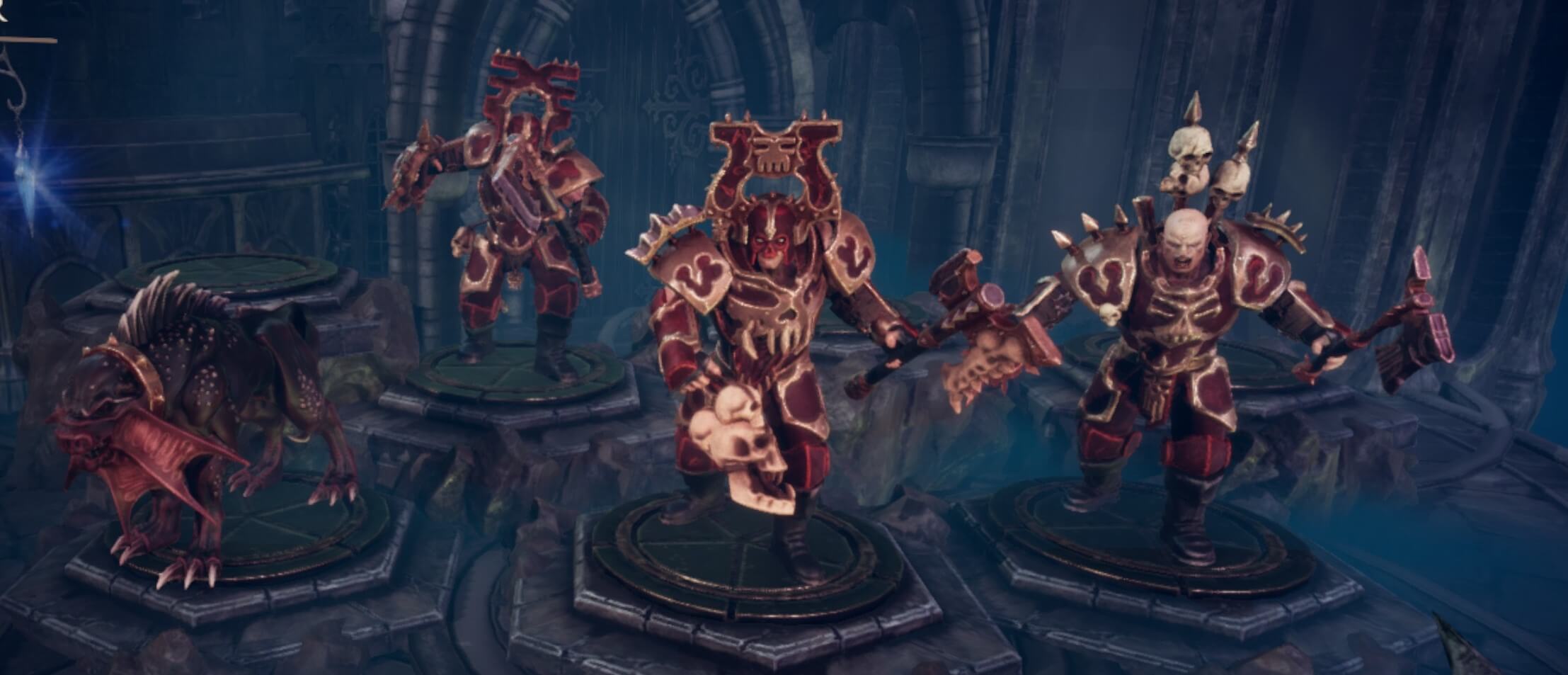
Magore’s Fiends
Magore’s warband comes with 4 Fighters. Their deck is very aggressive, focused on dealing damage in combat. They inspire by successfully attacking, which makes them faster and improves their combat. 2 of their fighters have reaction attacks against failed attacks on them and another fighter is a hound with great movement, able to get into combat quickly while the rest follow up. Beginner-friendly due to the single-minded nature of their decks.
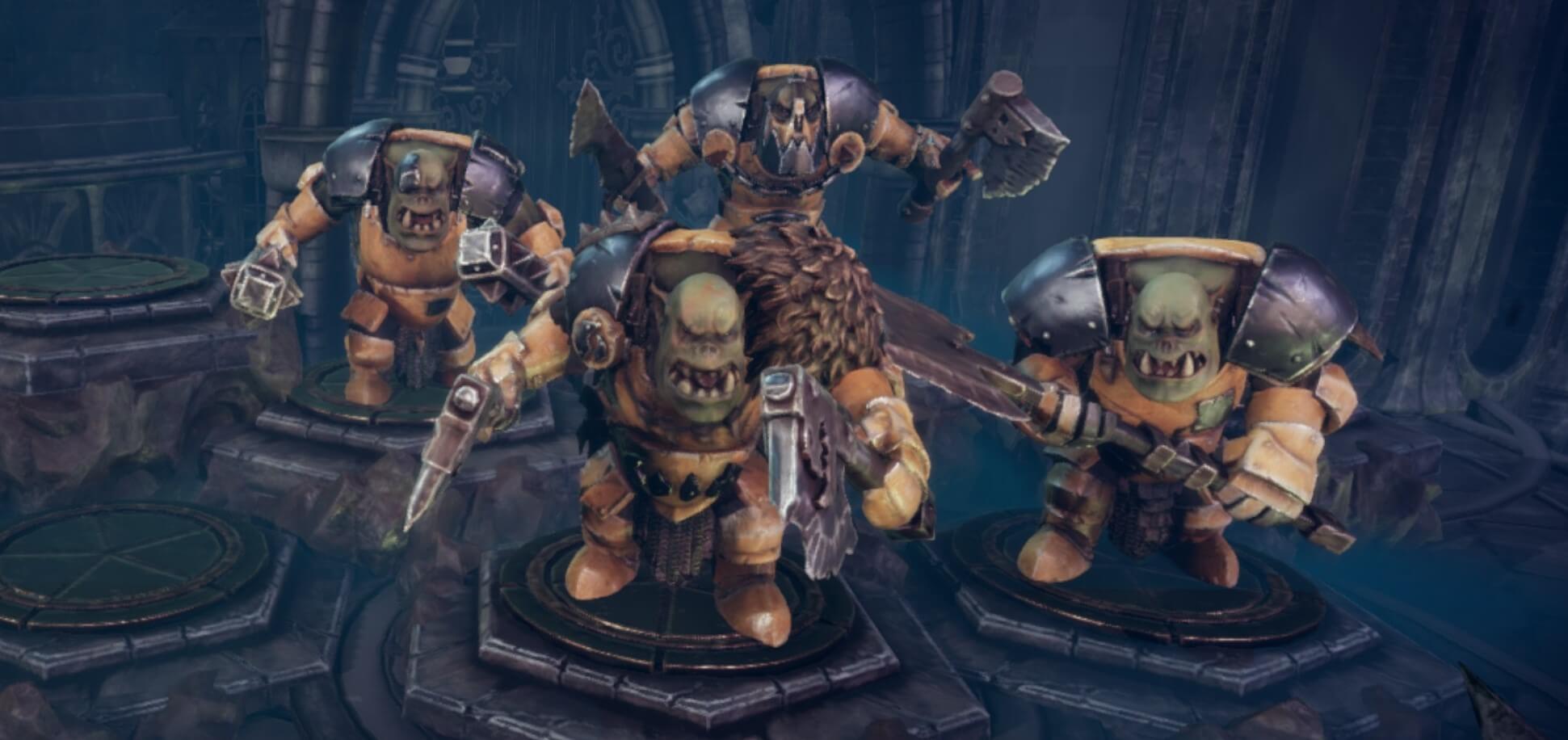
Ironskull’s Boyz
Ironskull’s warband comes with 4 Fighters. Their deck is entirely aggressive, either focused on simply getting into combat or keeping your opponent’s fighters out of your side of the board. They’re slow. But they hit hard and inspire simply by taking damage. They can suffer against faster or larger warbands, but they are beginner-friendly purely on the one-sidedness of their objective.
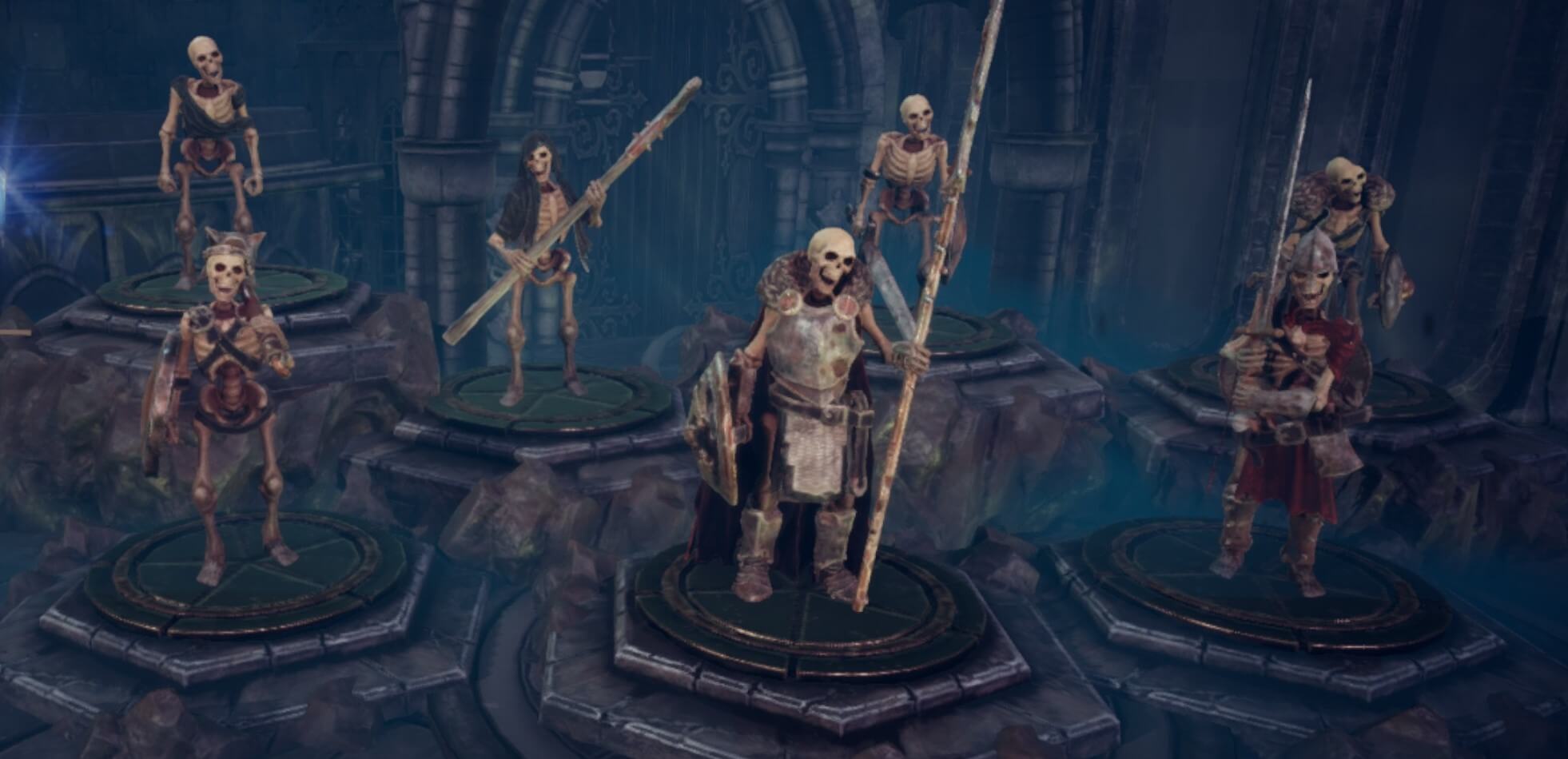
Sepulchral Guard
The Guard has 7 Fighters in their warband. They are all slow and brittle, but can be brought back after being taken out by their leader, the Sepulchral Warden. The Warden inspires by resurrecting his warriors, and the warriors inspire after being resurrected. Whilst they all have a low movement count, the Warden has an ability that can move 2 at once. This ability, combined with the resurrection means that the Warden does need protection, as your warriors are very fragile without them. The Guard focus on a hold objective deck but can be used aggressively. They do require some experience and skill to pilot, simply because of the large model count, which gives them a high skill ceiling.
Warhammer Underworlds Online Guide - Deckbuilding tips
The fighters each warband has in Warhammer Underworlds Online are fixed, so the variety and theme in the game comes from the deck you build for your warband. The cards you include in your deck influence how you play your warband and can be changed to suit your playstyle.
Warhammer Underworlds Online has 2 decks, the Objective and Power decks, and we’ll look at each in turn as they work differently. The objective deck is fixed at 12 cards, and the power deck has a minimum card limit, meaning that you can include more, but it’s not advisable until you’re more experienced with the game, or a specific warband. The reason for keeping the number of cards in the decks to a minimum is that it increases the likelihood that you will draw specific cards. In a game, you will have 3 turns of drawing and discarding 3 objectives and 5 power cards, if you use or discard both hands each turn, you will go through 9 of the 12 objective cards and 15 of the 20 power cards, meaning that some cards won’t get used. Actions can be used to draw more cards, but it’s not always an effective use of an action. What this means is that unless you cycle through either deck faster, some cards will go unused, so increasing either deck size lowers the likelihood of drawing specific cards.
Building and perfecting decks is an ongoing process is Warhammer Underworlds Online. You might find that certain cards aren’t working for you, or there may be a prevalence of some warbands or cards in the meta that makes some cards less effective. So don’t be afraid to test different cards and combo’s out as you work out your decks.
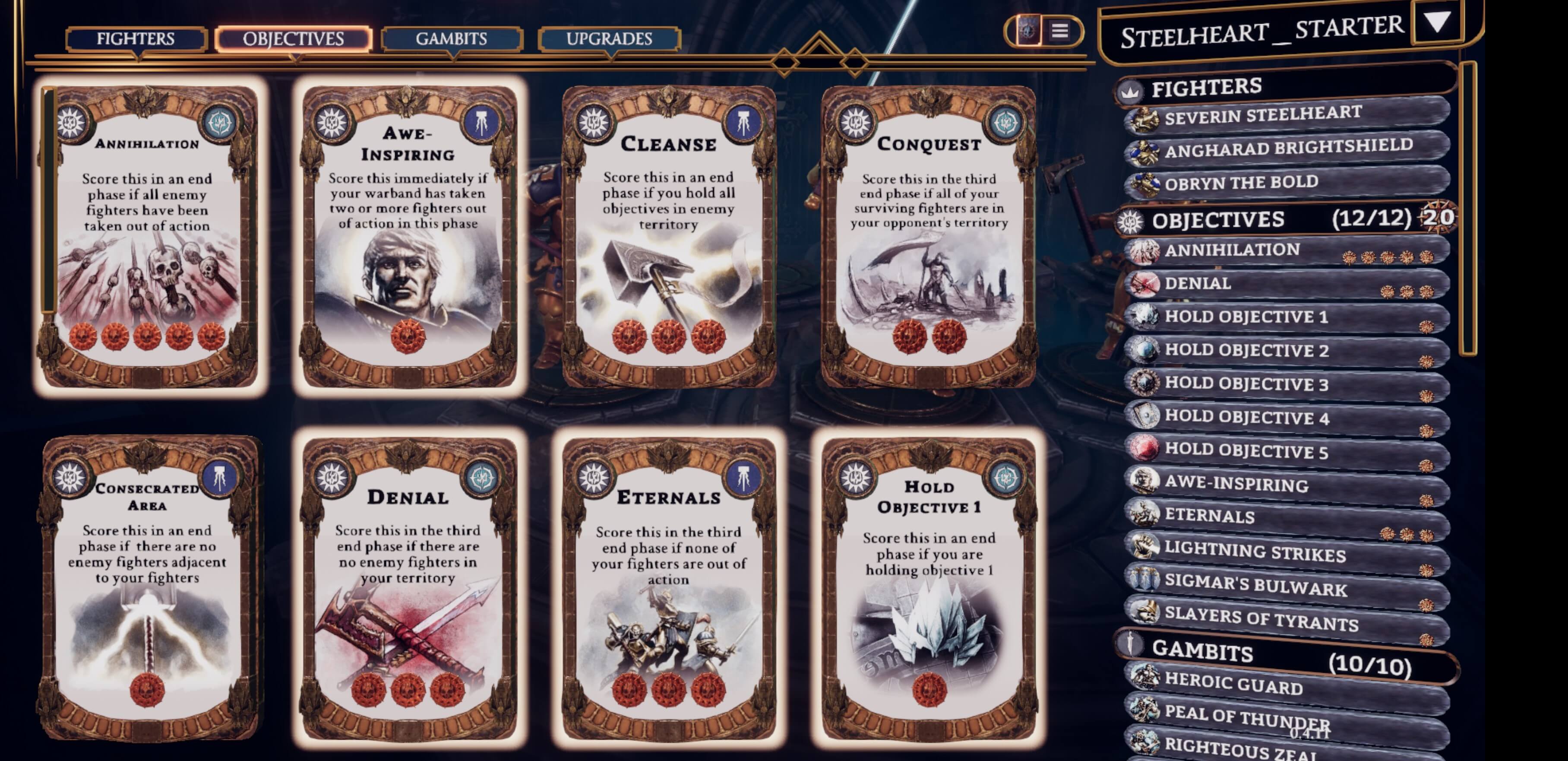
Objective Deck
The 12 card objective deck includes cards that score you glory, and glory wins you the game. The cards you include in your objective deck dictate how you play and should then influence how you build your power-deck to achieve those aims, so it’s recommended to build the objective deck first.
There are many ways to play Warhammer Underworlds Online, but they can essentially be broken down into Aggro (aggressive decks that aim to deal damage and take out enemy fighters) and Control (objective control decks that reward you for having fighters on objective tokens or having fighters in your board or your opponent’s). There is also a type of control, classed as defense and some decks can be built around sitting back and passively winning glory by not taking damage.
Once you’ve decided how you want to play, you can start looking at adding objective cards. You have the choice of faction locked objective cards and the universal objective cards.
With the objective deck, you need to find a balance of:
- Score immediately objectives - which can be scored during the round and also allow you to draw another objective card straight away
- Easy to score end of round objectives
- High scoring objectives - You want a maximum of 3 score at the end of the final round objectives, but aim for 1 or 2 as drawing them in the first round means they will have to be discarded, or held onto all game, blocking you drawing other objective cards
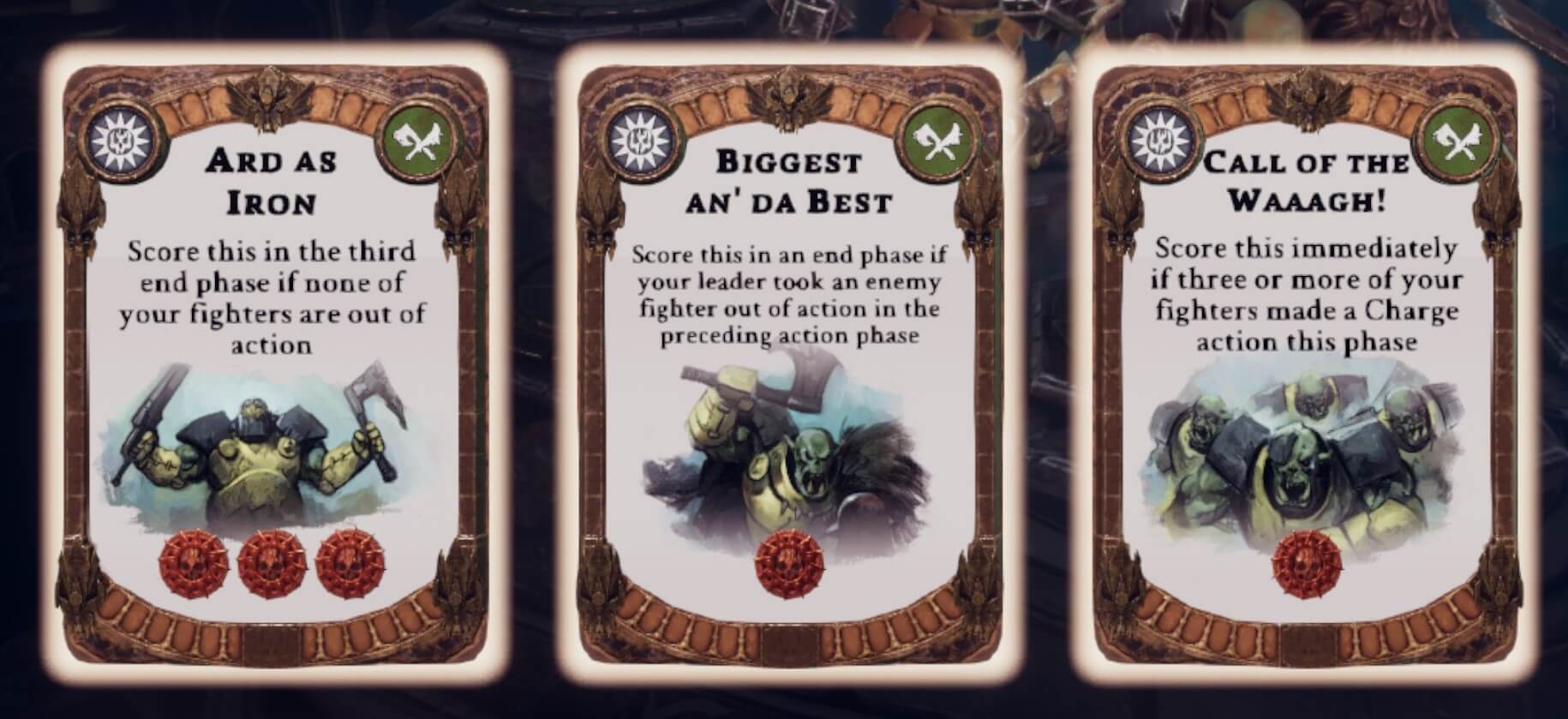
Having too many of any of these cards can hamper the efficiency of your deck. Score immediately objectives tend to be low glory and will restrict the maximum amount of glory your deck can earn you, and also means you may run through your deck too quickly. The higher scoring objective cards tend to be harder to achieve, so having too many of them can lock up your hand and hamper early momentum.
The glory earned through objective cards and taking out enemy fighters are spent on upgrades, which are half of your power deck, so not having any glory during the early game can also affect the efficiency of your power deck, locking it up with upgrades you can’t play because you don’t have any glory.
Once you’ve had some experience playing, it’s worth considering adding in some objective cards that can be scored when things aren’t going to plan. If a deck solely reliant on causing damage comes across a very effective defensive warband, or a warband that is simply better in offense, are you still able to score some glory?
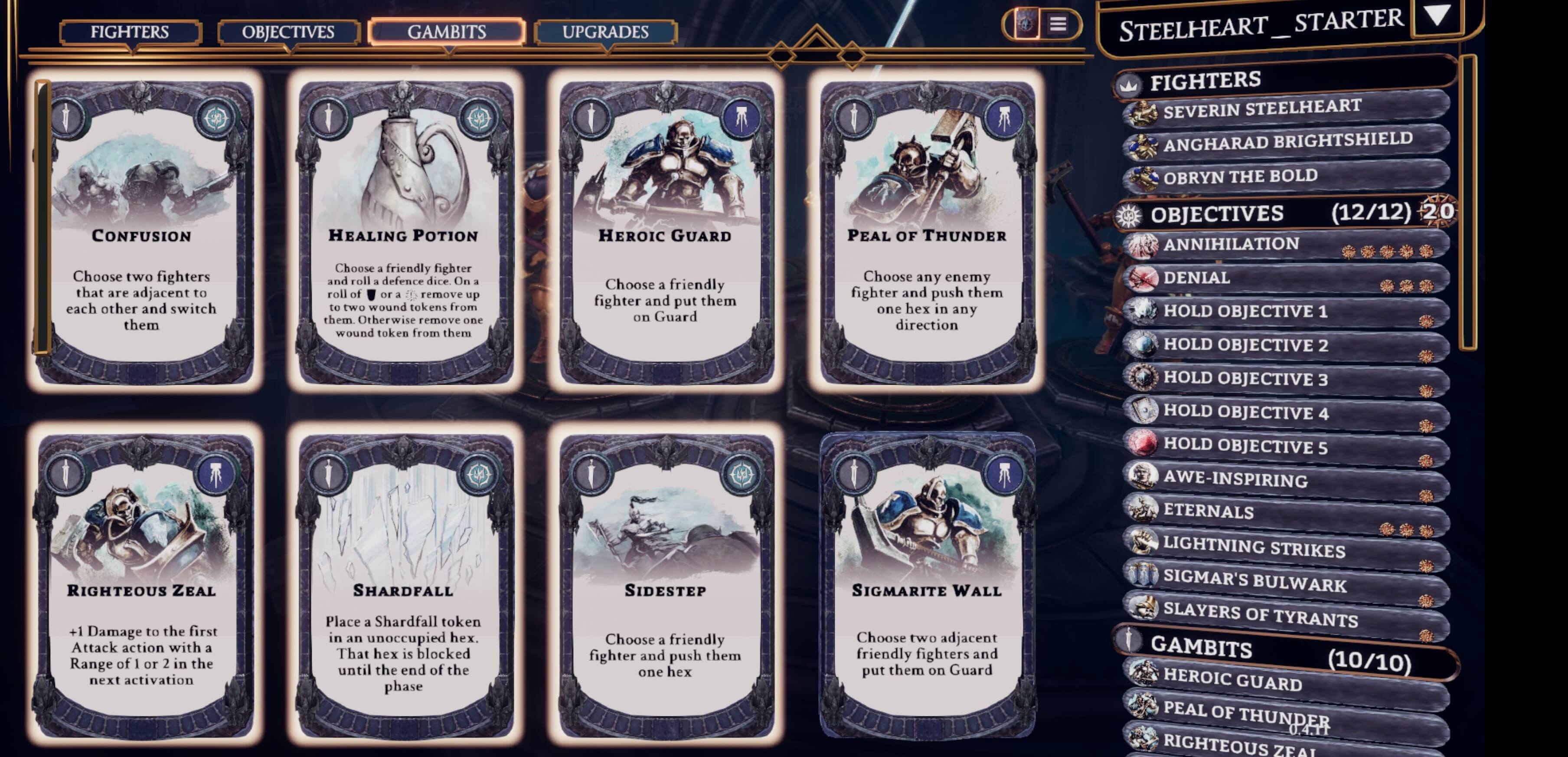
Power Deck
Power decks are made up of 2 types of cards, upgrades, and ploys and must be an equal balance of both types. For our recommended 20 card decks for beginners, that means 10 upgrades and 10 plays. More experienced players do successfully use decks of 22 or 24 cards, but until you know how to pilot a warband, it’s not recommended to use more than 20.
Upgrade cards are paid for using glory and are played on fighters. Some upgrade cards are restricted to specific fighters, so it’s not recommended to take lots of cards that can only be used on 1 fighter, because if they are taken out, it can leave you with a lot of dead cards in your hand and deck. Include upgrade cards to cover weaknesses in your fighters, or to strengthen abilities to further your goals.
Ploy cards are used at the end of activations and should be built around covering weaknesses for your fighters and furthering your objective goals. Don’t include too many cards that are situation-specific, as these can block up your power hand like hard to score objectives and upgrades for dead fighters. Out of activation movement cards are powerful, anything that lets you push a fighter 1 or more squares as it can allow you to position a fighter onto an objective, or for an attack without taking up an activation to move them. Cards that move enemy fighters are equally as powerful as they can be used to hamper their obvious plans for objective scoring or attacks they are looking to set up.
When looking to include a card, upgrade or plot, consider, does it work towards my objectives goal, will I be able to use it and does it cover a weakness, or improve an ability that needs improving.
Trial and error through playing will help you access which cards are working and which aren’t and also help to fine-tune your decks.
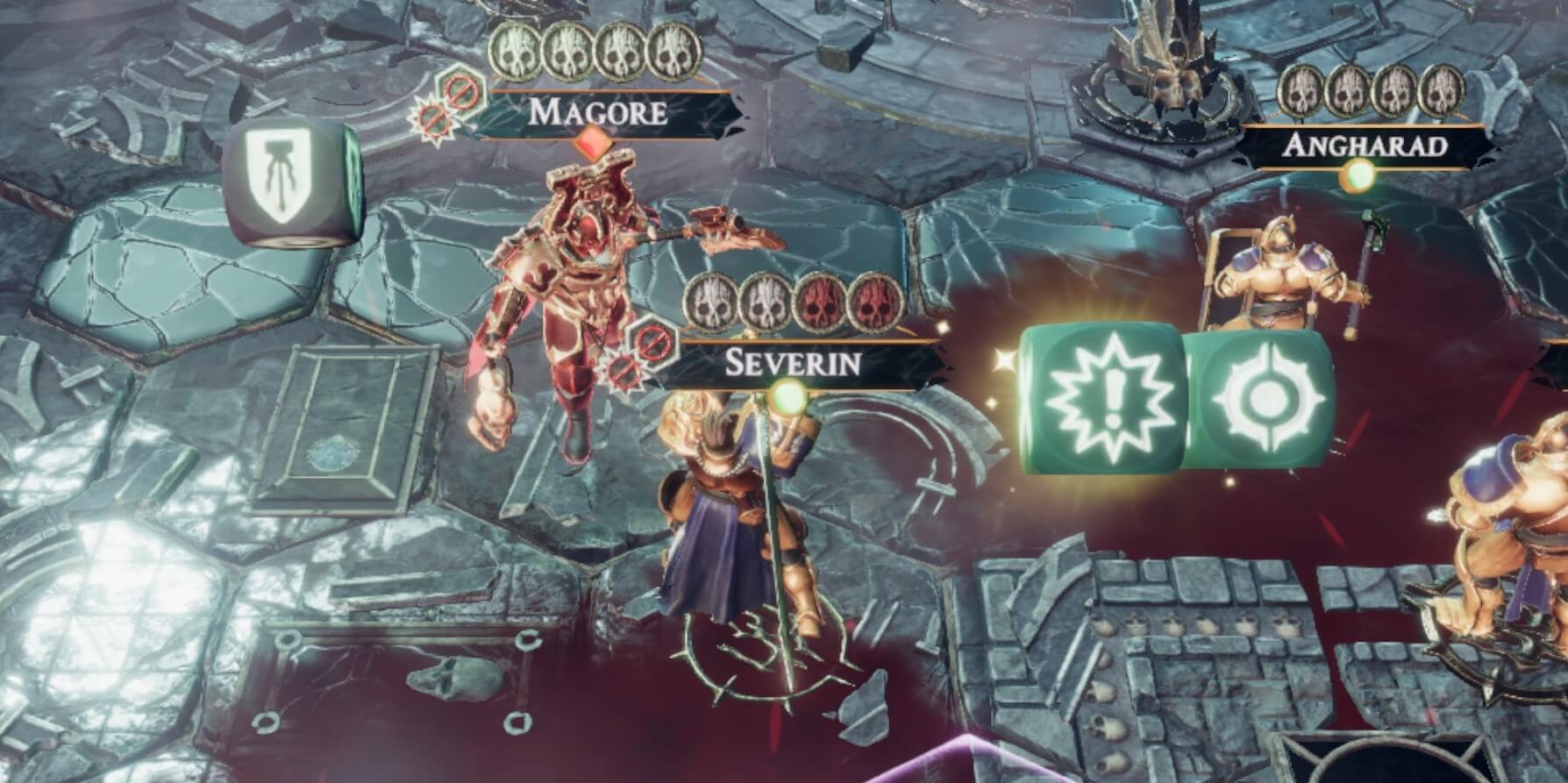
Warhammer Underworlds Online Guide - Dice Odds
One thing WUO doesn’t put across is the dice odds for attacks and abilities. Fighter’s attacks and defense have different symbols, and each has its own odds. For example, the attack dice has 2 Hammer faces, but only 1 Crossed Swords, so attacks hitting with the hammer symbol is more likely than the crossed swords. Rolling more dice increases your chances of rolling a critical, which trumps any defense unless your opponent also rolls a critical, so more dice is usually always good, but not as clear cut when rolling Crossed Swords against Shields.
Knowing and understanding these odds is important in competitive play and a lot of high-level players base their plays around them. Dice are random though, and chance is fickle.
As an example of dice odds.
Chances of a specific face when rolling 1 dice:
- Crit (1 in 6)
- Hammer/Shield (1 in 2, inc crit)
- Crossed Swords/Dodge (1 in 3, inc crit)
- Hammer/Shield with 1 support (2 in 3, inc crit)
- Hammer/Shield with 2 support (5 in 6, inc crit)
- Crossed Swords/Dodge with 1 support (1 in 3, inc crit)
- Crossed Swords/Dodge with 2 support (2 in 3, inc crit)
This then needs to be set against your opponent’s chances of rolling their attack or defense symbol. But can be taken as simply, equal dice, hammers are equal to shields, but more likely to hit against Dodge. Having support increases all chances of success, so having well-positioned allies can be very helpful for low ability swarm warbands.
For those interested, there is a full breakdown here, with odds with different dice numbers.
Setup
Game setup is a hugely important and regularly underestimated tactical part of Warhammer Underworlds. The placement of boards, objectives and your fighters has an impact on how you and your opponent play games and we’ll look at each briefly in turn.
Board Choice Placement
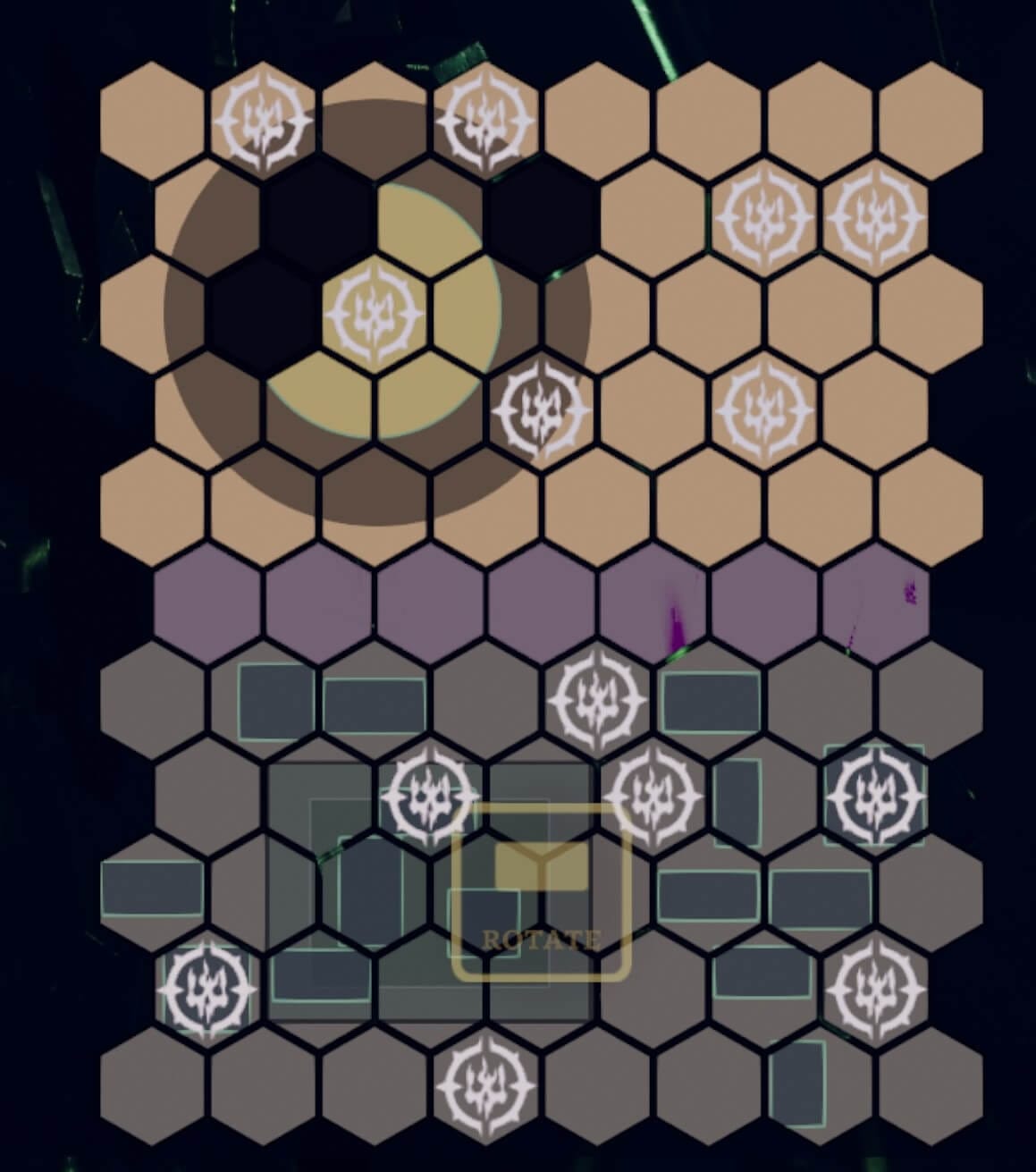
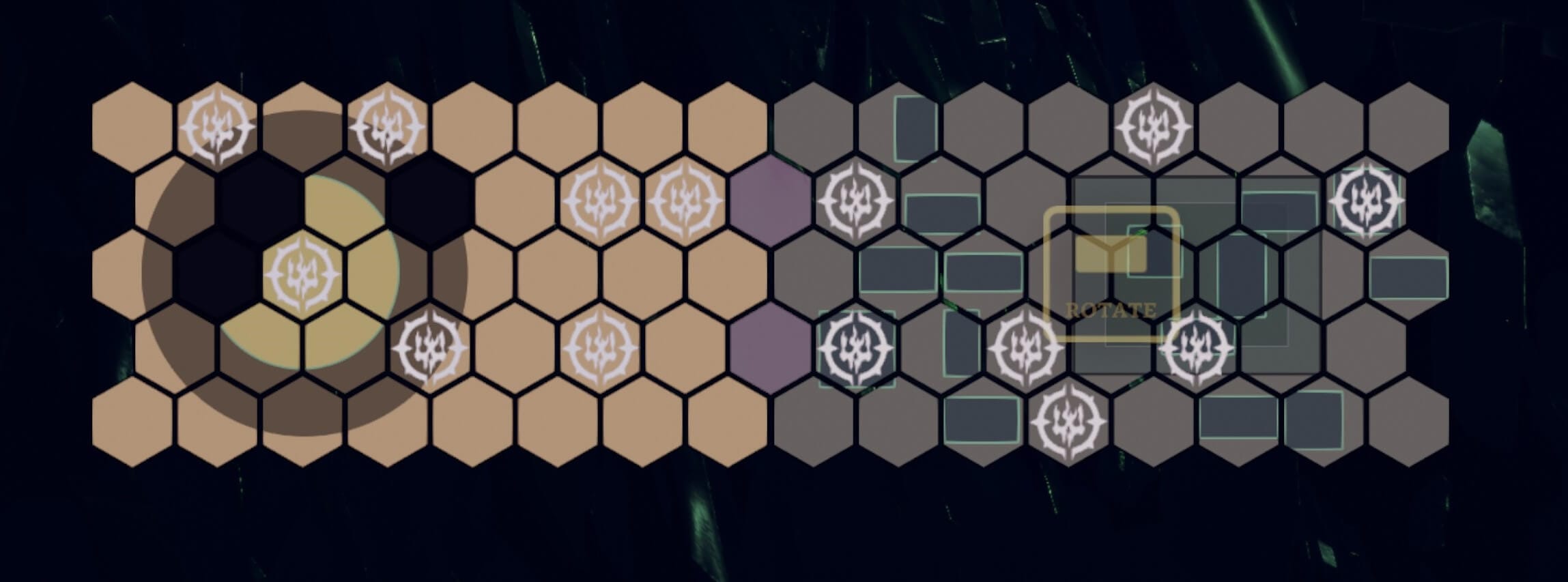
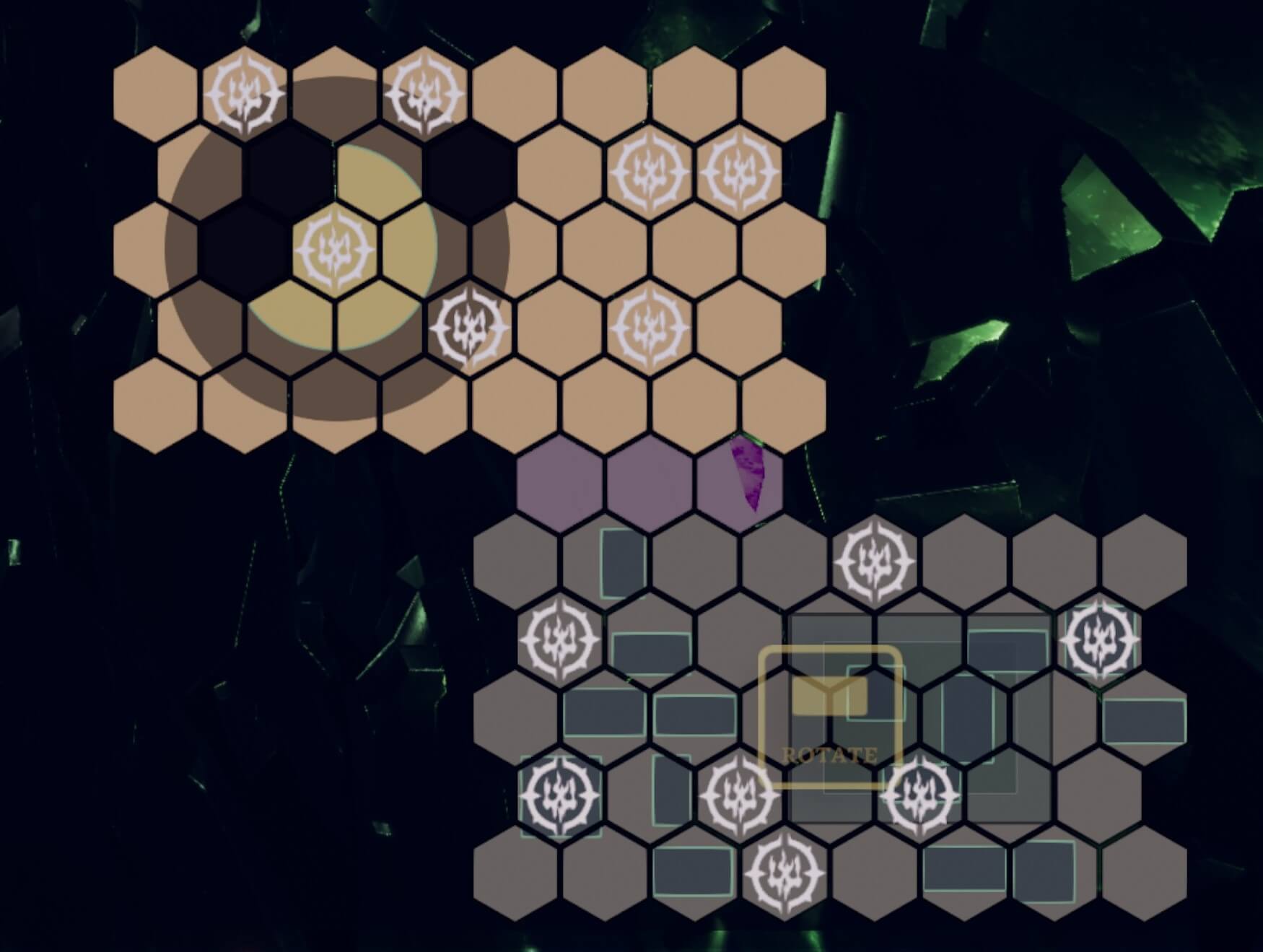
Each board in WUO has different starting hexes for fighters and some also have blocked hexes. The board you choose and the position of it affects where your fighters are in relation to objectives, and your opponent's fighters.
Board placement can be broken down into 3 types, Wide (boards placed with their longest sides together), Long (boards placed with their shortest sides together) and Diagonal (boards placed offset). The player placing the second board has the choice of final board configuration and it is powerful in dictating the early stages of the game. Playing Long can give you an opportunity to place fighters at the rear, making it hard for your opponent to reach them, whereas Wide can be great for aggressive decks, as they never want their opponent’s too far away. Diagonal creates a choke point, which can be great for defensive and aggressive decks alike as anyone gaining control of the choke point, can dictate the access to either board.
The different boards also need to be considered, as the location of the starting hexes on each board should be taken into account, as this can control you reaching your opponent with a charge on the first turn, or them reaching you.
It’s important to play around with different board configurations when testing your deck, as you won’t always be placing the final board, so your deck will need to work in different set-ups and you will need to learn how to play all setup types.
For a great full brief on board placement and the different boards available, check out John’s Blog.
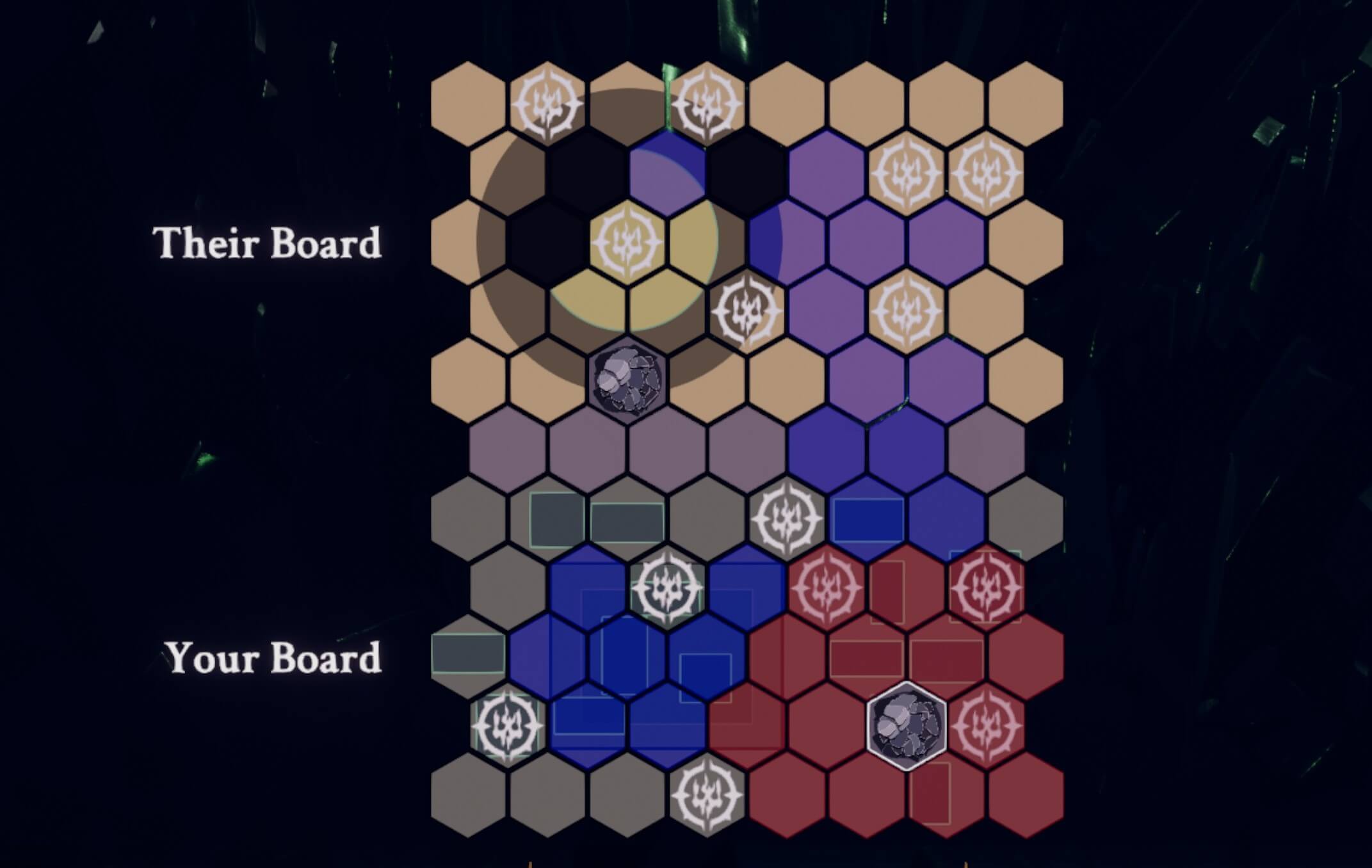
Objective and Fighter Placement
Objective placement is just as important because even if you’re not playing an objective game, your opponent might be. With the restrictions of objective placing, you can make it difficult for your opponent to place objective tokens optimally, and they can equally make it so for you.
The starting hexes for your and your opponent’s fighters are marked on the boards, and knowing the usual playstyle for your opponent’s warband, you can predict that aggressive warbands will deploy as far forward as possible, whereas objective holds will want objectives and fighters further back, and the objectives you place closer to the center.
Your hand needs to be considered in terms of your own fighter placement, especially your objective hand and you should place optimally to complete your own objectives. Also consider the possibility that if your opponent goes first, will they be able to reach and take out one of your essential fighters, if so, consider setting them up further back, or place your weaker fighters first to see where your opponent will place there's.
You don’t have to be an expert on board and objective placement from your first game of WUO, but it helps to have at least considered them, as you will start to build up your knowledge of what works and what doesn’t and the impact that they have on certain playstyles. While it is important to work out what works for your warband, it is also important to play on different setups so that you can still function when the board and objective setups don’t go your way, or if frustrating your opponent’s plan becomes more optimal than being able to operate your own.
If you have any tips, or if there is anything you'd like us to cover in our guide, let us know in the comments below.
Have a tip, or want to point out something we missed? Leave a Comment or e-mail us at tips@techraptor.net
